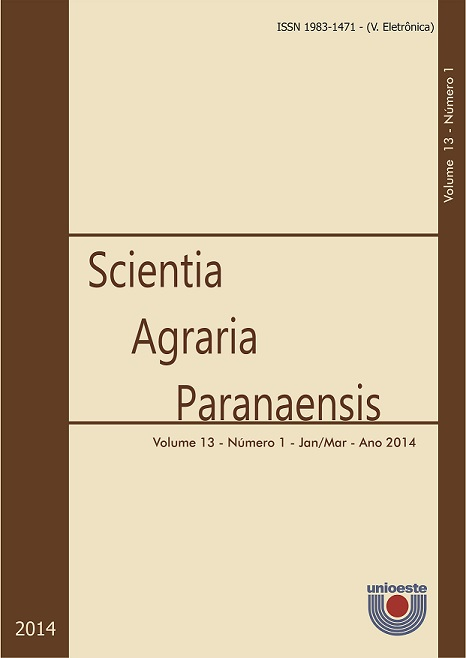Thermal shock with combined calcium in tomato tolerance induction to cold storage
DOI:
https://doi.org/10.18188/sap.v13i1.6405
Supporting Agencies
CAPES
Keywords:
Atividade enzimática, estresse fisiológico, dano pelo frio, Lycopersicon esculentumAbstract
This study evaluated the effect of thermal shock, combined with calcium in the microbiological and biochemical response of tomatoes stored under refrigeration. Heat shock treatments (45 ° C for 12 minutes under water) combined with calcium (CaCl 2) were applied to tomatoes. After treatments, fruits were stored at 5 ° C for 10 days, with subsequent storage at 20 ° C for 10 days. The activity of peroxidase (PO), the contents of β-carotene, lycopene, phenolics and ascorbic acid and also the incidence of pathogens were evaluated. The results showed no effect of heat shock and its combination with Ca on the activities of PO and the ascorbic acid content of tomatoes submitted to cold stress. Significant influence on the total phenolic content of tomatoes under cold stress occurred only when the thermal shock was apply with calcium, with accumulation below the control. The use of thermal shock in tomatoes submitted to cold stress showed effectiveness in reducing the incidence of pathogens, which allows for greater shelf-life of fruits stored under refrigeration. The combination of calcium with heat shock was less effective in controlling fungal incidence compared to heat shock alone would not compensating for its use. Symptoms of chilling injury due to senescence and development of pathogens were not found in tomatoes treated with heat shock isolated, revealing itself as an effective method in promoting tolerance of fruit to cold stress.Downloads
Published
06-05-2014
How to Cite
ZACHOW, K.; CELANT, V. M.; BRAGA, G. C.; STANGARLIN, J. R. Thermal shock with combined calcium in tomato tolerance induction to cold storage. Scientia Agraria Paranaensis, [S. l.], v. 13, n. 1, p. 47–56, 2014. DOI: 10.18188/sap.v13i1.6405. Disponível em: https://e-revista.unioeste.br/index.php/scientiaagraria/article/view/6405. Acesso em: 1 jun. 2025.
Issue
Section
Scientific Article
License
Aviso de Direito Autoral Creative Commons
Política para Periódicos de Acesso Livre
Autores que publicam nesta revista concordam com os seguintes termos:
1. Autores mantém os direitos autorais e concedem à revista o direito de primeira publicação, com o trabalho simultaneamente licenciado sob a Licença Creative Commons Attribution que permite o compartilhamento do trabalho com reconhecimento da autoria e publicação inicial nesta revista.2. Autores têm autorização para assumir contratos adicionais separadamente, para distribuição não-exclusiva da versão do trabalho publicada nesta revista (ex.: publicar em repositório institucional ou como capítulo de livro), com reconhecimento de autoria e publicação inicial nesta revista.
3. Autores têm permissão e são estimulados a publicar e distribuir seu trabalho online (ex.: em repositórios institucionais ou na sua página pessoal) a qualquer ponto antes ou durante o processo editorial, já que isso pode gerar alterações produtivas, bem como aumentar o impacto e a citação do trabalho publicado (Veja O Efeito do Acesso Livre).
Licença Creative Commons
Esta obra está licenciada com uma Licença Creative Commons Atribuição-NãoComercial-CompartilhaIgual 4.0 Internacional, o que permite compartilhar, copiar, distribuir, exibir, reproduzir, a totalidade ou partes desde que não tenha objetivo comercial e sejam citados os autores e a fonte.


